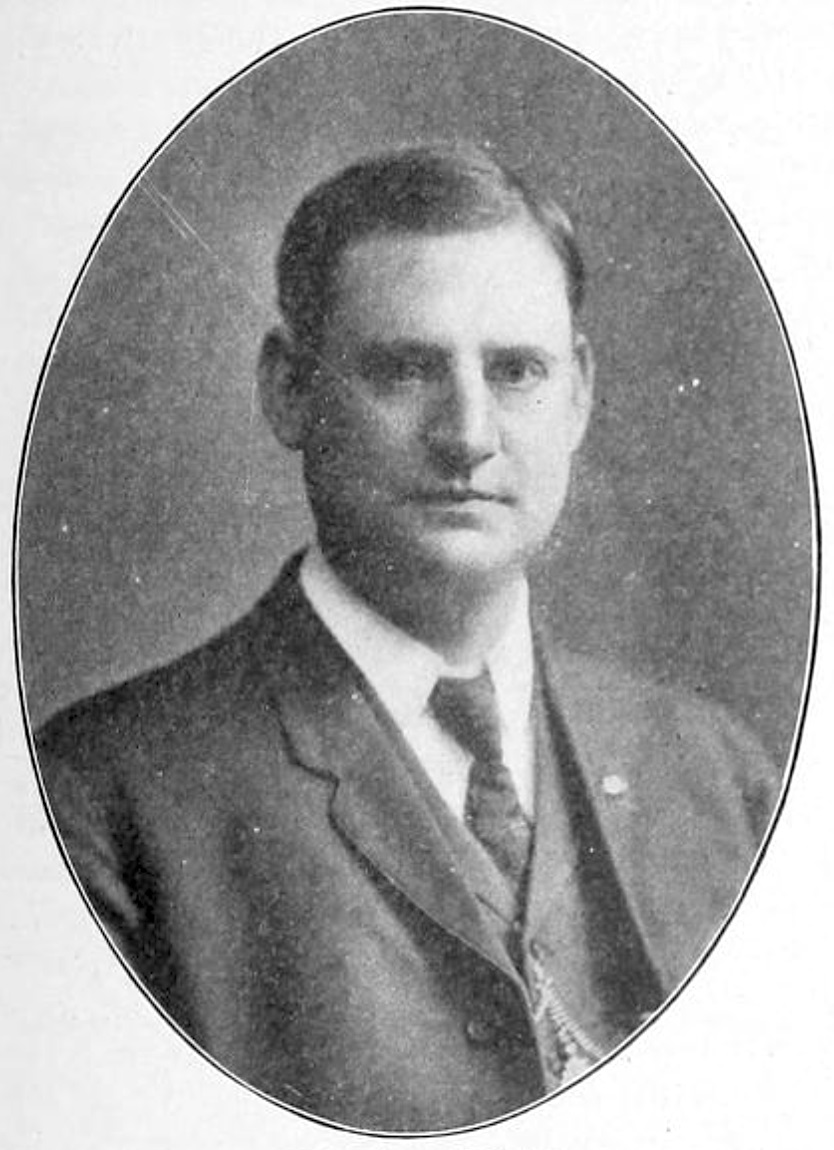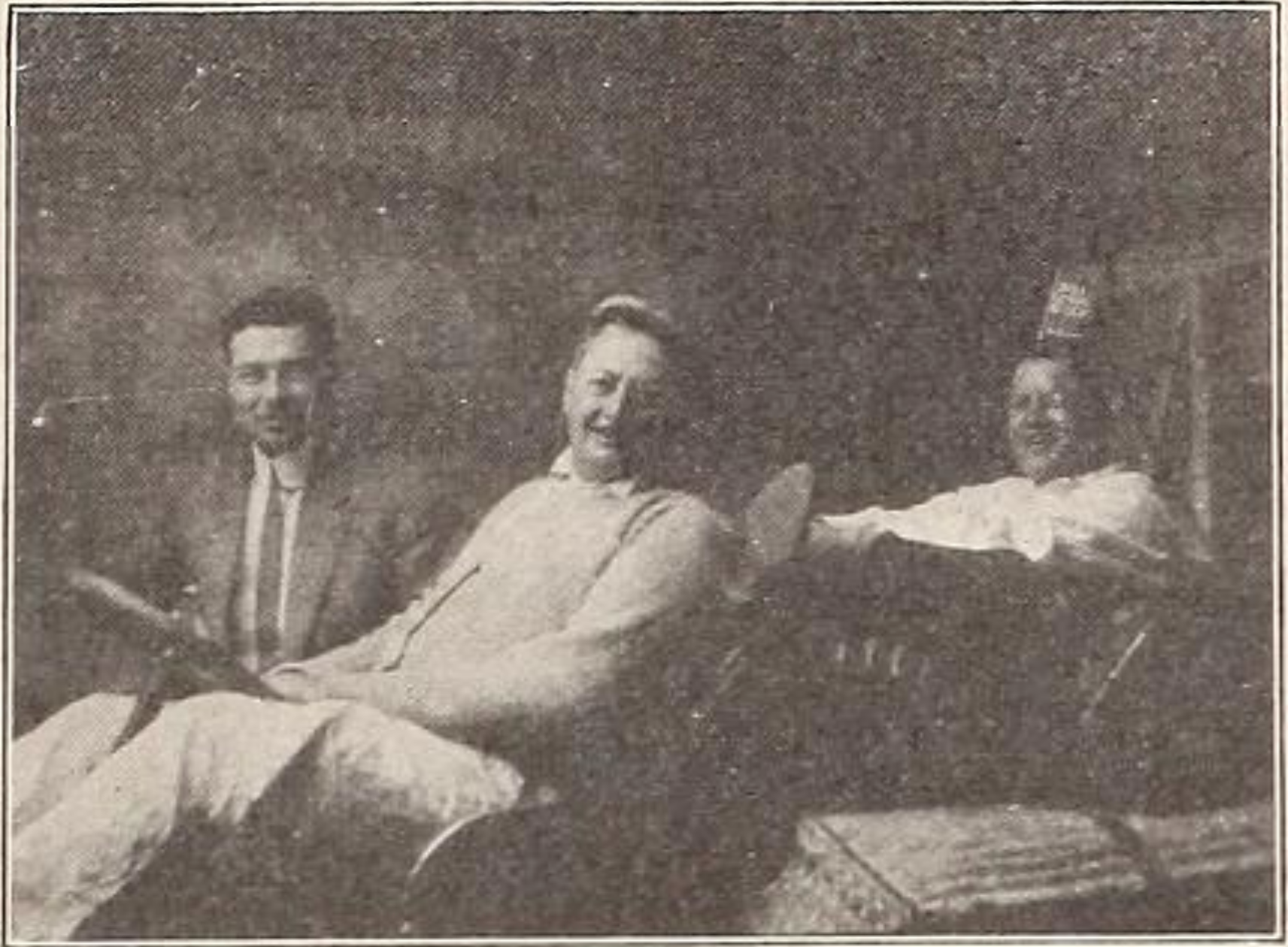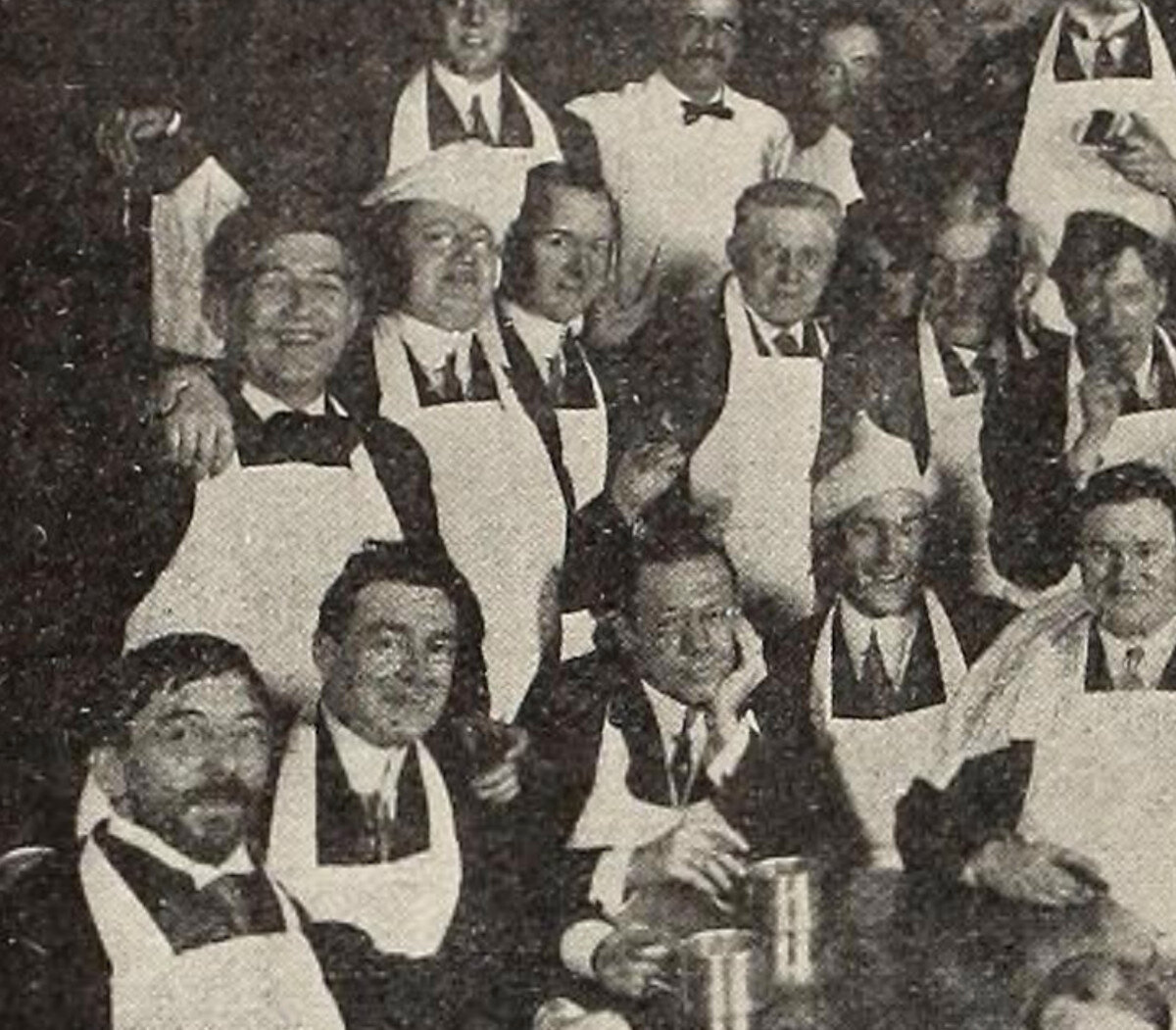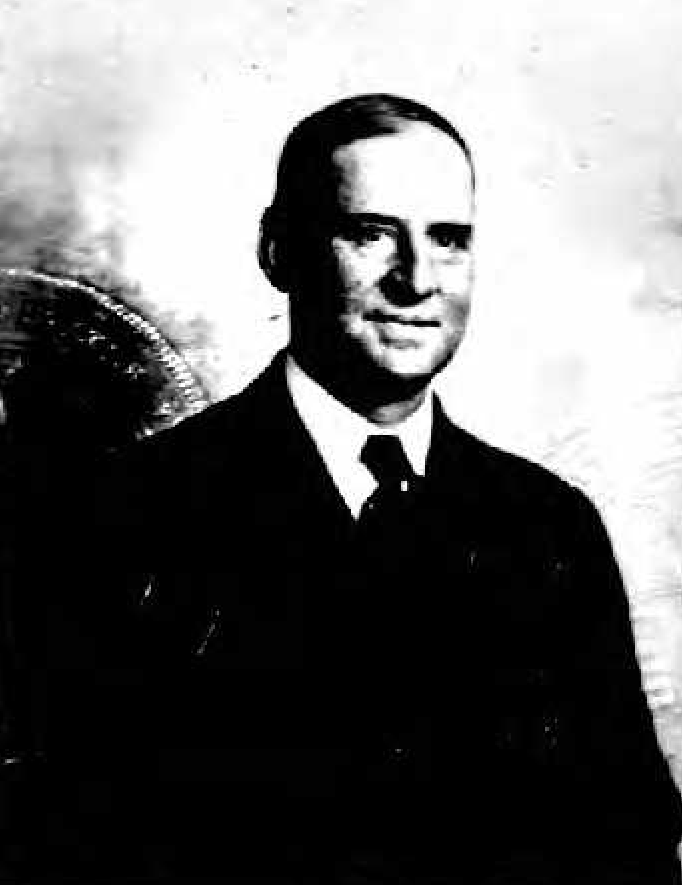Few engineers live scandalous lives, but one emerged in the acoustic era that lived a rather extraordinary life. George Cheney came from a humble background, but worked his way up the corporate ladder, becoming one of the most valued inventors in the phonograph business. All of this success came crashing down just before the beginning of electric recording. His story is full of ups and downs, scandals, and novel worthy twists.
George Kenneth Cheney was born in Crown Point, NY in 1871. It is unknown exactly how he got involved with the phonograph, but he showed great talent working with machinery by the early 1890s. It was stated in several period sources that he began working for Berliner in 1897, around the time they had moved to New York. He proved a good inventor for Berliner, improving on their machines and methods for making masters.
He and the other inventors like Frank Seaman were beginning to find working for old man Berliner limiting. Berliner himself was no expert with wrangling talent and managing the financial aspect of the company. It had become so dire that Seaman had to pay the recording artists and manage the sessions himself. By 1898, Seaman decided to leave Berliner, and took Cheney with him.

The company that Seaman founded was to be called Zon-O-phone. When they began, they were mostly focused on manufacturing quality machines. Part of this was thanks to Cheney. He was still a very minor figure in the business at this time, as the mere existence of this new company was trivial. One of the many devices he improved upon was the coin operated machine. He made one for Seaman. These unfortunately sold poorly, and hence are among the most valuable phonographs in the collecting market today. It was during this time working for Seaman that Cheney likely became acquainted with Fred Hager, someone who he would become unusually close to in the future. Much of his involvement in the company remained rather minor, but things started to change when Victor bought Zon-O-phone in 1904.
Much like many of the workers for Zon-O-Phone, they disliked working under the influence of Victor, so one by one they jumped ship. Cheney was willing to work for whoever showed great interest in his wax formulas and machinery improvements, therefore he did not discriminate against Victor. He took a job working for Victor at this time, and according to an issue of Talking Machine World in mid 1911, Cheney
[was] stationed with [Victor] company at China making records, but 8 months of talking a harlequin of English, Chinese, and Portuguese, mixed ad lib.(called pigeon English) was enough for Mr. Cheney, and consequently the United States got him…
This however, would not be the last time Cheney was called to Victor for this purpose. These adventures would eventually cause some trouble.

All while this was happening, Cheney was becoming familiar with the Hager family, spending lots of time with all four Hager siblings(Fred, Lena, Jimmy, and Georgiana)having good times and goofing around. When he and Fred Hager were offered positions at a new innovative record company in Boston, they both jumped at the opportunity. A single wealthy donor decided to fund this new company, soon to be called the Boston Talking machine company. This label manufactured the first vertically cut records in the United States, known more universally as Phono-cut. With that, Cheney moved to Boston in 1910, and set up shop there.
At first, Phono-Cut was going well, but problems with the concept and the management quickly arose. Very few people had the means to afford buying an entirely new phonograph just to play these records, and adaptive reproducers were not yet on the market. Without these vertical reproducers, buyers were convinced that these records were poorly made and not worth their time and money. Thus, sales of these records were very limited. It seemed like a rather doomed idea from the start, but they continued making the records. All of the usual names appeared on the label, but Hager had the brilliant idea of bringing in Boston Symphony orchestra members to make records. These are among the very first recordings of this famous organization, and ought to be noted as such.
Fred Hager emphatically stated decades later(when asked about them by Jim Walsh) that these earliest vertical recordings were heads above the rest in terms of sound quality.
“Hill-and-Dale records,” Fred said, “are better than lateral — there’s no doubt about it. Our vertical cut Okeh record was better than the lateral record we turned out afterwards, but there was no use in making a better record without phonographs to play it. The majority of machines would play only lateral records…”
While Hager claimed this, we could be sure that Cheney would have said otherwise. Much of what Cheney and Hager were doing while in Boston had little to do with Phono-cut and these vertical records. In all the phonograph media of the time, each new edition mentioned short pieces about them hosting parties for the phonograph and BSO crowd, games, and large steak dinners. One of these sections read thus:
The “boys” of the Boston Talking Machine Co. and those of the Eastern Talking Machine Co. had a great time of it on the evening of Nov. 1, when at the Boylston alleys they entertained quite a party of their friends in a splendid, and in some respects a remarkable, exhibition of bowling…. The “boys” had to top off with something else, so they repaired to Charlie Wirth’s— never heard of the place? Surprised. And there they all enjoyed — why, ice cream, of course.
Just below this the scores of all the participating bowlers are listed.
One of these pieces tells a story of Hager pulling pranks on a few of the BSO musicians, but the most highlighted party Cheney and Hager hosted was the “Beefsteak dinner”. It was a massive event that hosted over 50 men at a German style restaurant, organized by Hager and Cheney. There’s even a very nice large photo to accompany the extensive piece on it. As observed by some collectors, Hager and Cheney look like they’ve had a few drinks by the time the photo was snapped. It’s photos like this that suggest that perhaps Cheney’s troubles had already begun.

By this time it was known in the recording world that Cheney was a drunk. It seemed that this habit had gotten worse in his time working with the phonograph. His charisma and technological talent kept him very popular in spite of his habit. By the beginning of 1913, Phono-cut was over with, and Hager and Cheney had to split their friendly bond, at least within the workplace. Cheney was called back to Victor, as they still understood the value of his wax formulas and diaphragm dexterity. He was back to making trips for them. Many of his overseas trips were to the same places that he was previously sent, though it seemed he complained about it a little less, perhaps because he had more money to spend on drinks, and other things, while traveling.

Around this time, he was being sent to the east and to Cuba every year, leaving us many passport photos to comb through. One of these stated that he had a tattoo on his left forearm, something we often wonder about as historians, but almost never get confirmed; as tattoos were popular at the time, but were most often concealed.
By this time Cheney had been married to a woman named Julia since 1892, but their marriage had always been fraught. Unlike many of his colleagues, Cheney was a playboy, and spent a lot of time with women. He had several children with Julia, but she was rightfully suspicious of his extended time away. As his daughters grew up, they also became frustrated at not being able to see their father, creating more tension in the family.
By 1923, Cheney was spending most of his time in Cuba for Victor. And it was after one of these trips that Eddie King and the others at Victor had reached their threshold with his habits. He had gotten little to no work done for them, and his drinking had become too much of a burden to keep him on their staff. That year they fired him. It was a scandal in the phonograph world, as he was still a very knowledgeable and valuable inventor to the trade. At this time he was a very wealthy member of his community in Baldwin and Freeport, Long Island, so Victor cutting him out did little damage. He was a big donor to the bank in Baldwin, and was also involved in the volunteer fire department. Until a few years ago, one could go to the bank in Baldwin and see his name on one of the walls.
But wait, there’s more.
Around this low point, Cheney had been thinking of ways to get out of his marriage to Julia, not really considering the long term consequences of doing so. The woman he was considering remarrying wasn’t just anyone, she was Fred and Jimmy Hager’s sister Georgiana. Georgiana, like Cheney, had been married for many years and had a large family with her partner, but was adventurous and looking for something different. Georgiana was also an independent soul like Cheney, tall, handsome, and a long time friend. In 1926, Georgiana’s husband died, so this seemed like the perfect opportunity for Cheney to make his move. It took until 1929 for them to get married, but when they did, Georgiana took only her youngest child with her, and left the others to be raised by other Hager’s. This also happened with Julia and Cheney’s daughters. The marriage put both families in an awkward place, creating long-standing tension that remained for decades.
He continued to work for smaller record companies, and getting the occasional patent for a new device, as he always had. At this point phonograph companies generally stayed away from him, but he was likely still involved as an important consultant when new patents and deals were being made. It is also likely that his wax disc formulas remained in use until after his death.
The circumstances surrounding his death are somewhat mysterious, as the papers claimed one thing, but he was at a rather low point when he died in 1937. When his first wife and daughters heard of his death, they weren’t quite so sorry. Julia and the daughters lived poorly after Cheney left them, slowly beginning the decline of the very upscale house they owned in Baldwin. After his death, all of the wild stories that were part of his life became family secrets, both for his direct descendants, and for the Hagers, who unexpectedly became part of Cheney’s family. His family now remains rather quiet about his scandalous career. He was spoken of little in the decades following his death, but his influence remained in recordings as a whole. Cheney is rather unknown today, but his life story is about as intriguing as that of an engineer could be.
R. S. Baker has appeared at several Ragtime festivals as a pianist and lecturer. Her particular interest lies in the brown wax cylinder era of the recording industry, and in the study of the earliest studio pianists, such as Fred Hylands, Frank P. Banta, and Frederick W. Hager.






















